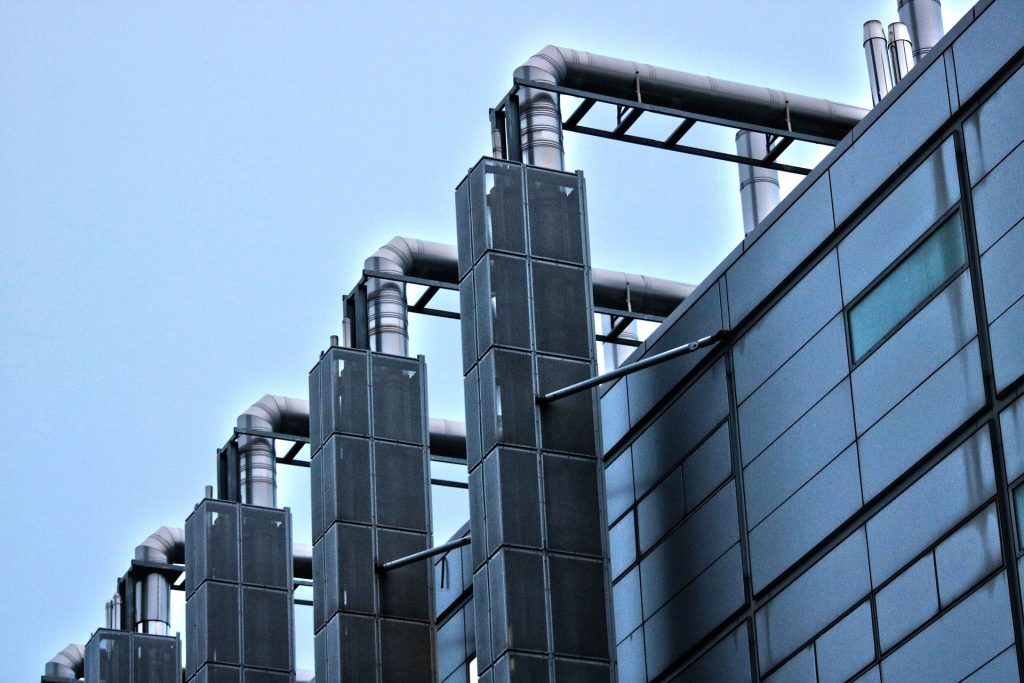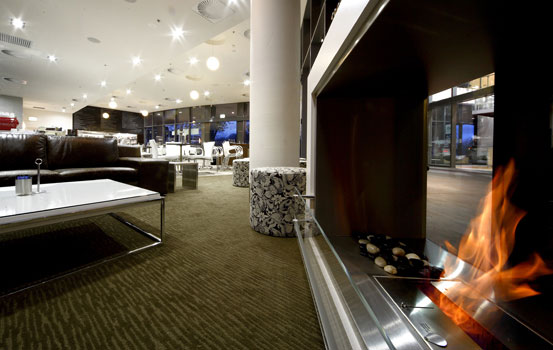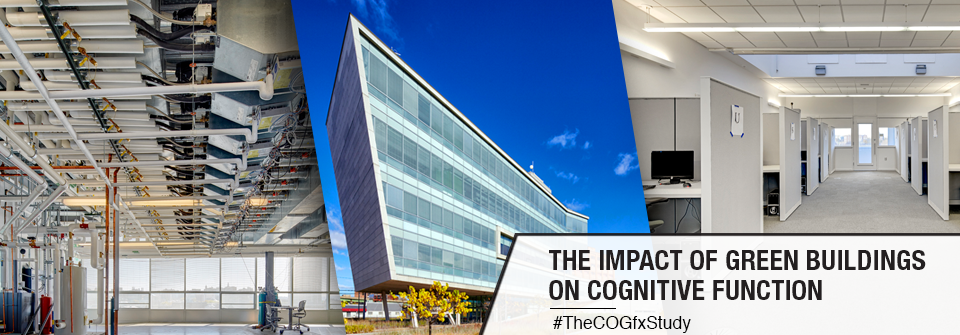The Multiple Benefits of Energy Efficiency – 9 case studies
Reducing energy consumption and thereby generating substantial savings on all energy related costs is one of the key reason for the increased interest and level of investment into Energy Efficiency (EE) measures. Indeed, energy efficiency is the one single energy resource that every country, every business, possesses in abundance. However, focusing purely on the bottom line benefits is paying lip service to the true multiple benefits of energy efficiency.
Here at ECrowd!, we strongly encourage and support change towards low-carbon energy systems that enable sustainable economic development. The following article aims to explore the multiple benefits of energy efficiency through a series of concrete and real case studies. Our hope is that it inspires you to start investing in what is probably one of the most efficient tools to address our key economic and environmental challenges.
1. How can a manufacturing plant boost productivity with energy efficiency?
Metalexacto, a small lead foundry based in Peru, increased its productivity of secondary lead by 34.7 tonnes per year (worth about $16,980 USD annually) through a few simple EE measures. The boost in productivity was driven by replacing the burner with a more efficient one, changing their refractory bricks and installing a hood on the furnace.

In addition to the productivity improvements, Metalexacto has improved the plant’s operating efficiency, resulting in a waste reduction of 35,500 kg/year in raw materials and reduced air emissions of almost 240 tonnes CO2 eq. Through the multiple benefits of energy efficiency, Metalexacto provides better product quality, working conditions and community relations (with the decrease in pollution), and has achieved financial savings.
All types of manufacturing plants can boost their productivity with energy efficiency. Sometimes, even the smallest change can cut costs to free up resources to invest in more productive activities.
Do you have a case study from the manufacturing sector demonstrating the multiple benefits of energy efficiency? Please share it in the comments below.
2. Does energy efficient buildings really boost employee productivity?
Ask any business whether or not they want an increase in employee productivity and we’re confident the answer will be a resounding YES. An upgraded workplace will save energy costs by reducing the space that is heated, cooled and lighted. What else? It maximises the comfort and productivity of employees.
To illustrate, Saint-Gobain’s new LEED ‘Platinum’-rated offices in Pennsylvania show quite an impressive boost in employee productivity! It might have taken 18-months to renovate their headquarters, but the outcome was worth it. Since the return to their now comfortable, well-lit and breathable workspaces, Saint-Gobain has seen the productivity of its call centre staff double thanks to its energy efficient designs.

Source: https://www.edie.net/news/6/Green-building-design-is-a-smart-business-move-finds-report/31117/
Among the designs was the installation of daylight sensors and SageGlass (to diminish uncomfortable glares and solar heat gains). These small changes brought huge benefits: the call centre staff in their new North American headquarters have achieved a 97% increase in sales generated leads and 101% increase in leads per call since moving into the building!
Do you know of examples of energy efficient workspace designs that have had a positive impact of employee productivity? Let us know in the comments.
3. Employees are a company’s number one asset! Here’s how you can retain them with energy efficiency
The staff is often a major part of operating costs for businesses; paying salaries and benefits to employees, upgrading their personal technology and providing them with professional training. As discussed above, investments in energy efficiency have a direct impact on staff productivity. And even more importantly, employees want to work in a green building.
In 2002, GlobeScan conducted a survey of 800 MBAs from top international business schools. They found that 79% of employees surveyed were willing to forego income to work for a firm with a credible sustainability strategy; while 80% said they felt greater motivation and loyalty toward their company due to its sustainability initiatives.
That’s why it’s important to pay attention to office environments and amenities to increase employee retention. Notably, Dell Children’s Hospital, in Texas, was the first hospital in the world to achieve Platinum LEED in 2008. The hospital embraced the multiple benefits of energy efficiency, leading to a healthier environment. This played a significant role in recruiting and retaining talented doctors and nursing staff.
Just in the United States, training a new nurse costs on average $70,000. While the national average turnover rate ranges from 10% to 15%, new hospitals experience up to 30% turnover in their first year. Dell’s first-year rate was an astounding 2.4%!
Have an EE and employee retention success story you would like to share with us? tell us your story in the comments
4. Does an energy efficiency building positively impact the health & well-being of its occupants? Yes!
Recently, a milestone study captivated the attention of many, such as The Wall Street Journal and Washington Post. Researchers from Harvard and the State University of New York studied 109 workers at 10 different buildings in five cities across the US. They investigated the health effects of working in an energy efficient building with enhanced ventilation, compared with a conventional building environment.
The results are quite staggering! Employees working in an energy efficient building had 26% higher cognitive function, 6% higher sleep quality and 30% fewer symptoms of ‘sick building syndrome’ (a condition typically marked by headaches and respiratory problems caused in part by poor ventilation).
Have you gained from the multiple benefits of energy efficient buildings? Make sure to share your story with us in the comments.
5. How can a restaurant reduce its operating & maintenance costs with EE?
Because restaurants are such high energy users, investing in energy efficiency is a very strategic move. Without a doubt, upgraded or retrofitted kitchen equipment will significantly reduce operating and maintenance costs in just a few months – without spending massive amounts of capital.

Source: http://xchangeonlondon.com.au/
The Xchange on London is a restaurant/bar based in Australia. The owner was looking for ways to reduce operating costs and increase profits.
At the time, the owner noticed the lights were throwing out a lot of heat and seemed to be burning out all the time. Once an energy audit was completed, a timing system was installed to shut down non-essential refrigeration (such as soft drink bottles during closing hours), saving on running costs. In addition, the restaurant’s light bulbs were replaced with energy-efficient alternatives.
Xchange on London now saves $3300 annually. In fact, the savings in their energy bills paid off their upgrades in just over 10 months.
As a restaurant owner or managerhave you gained from the multiple benefits of energy efficiency? Tell us about your experience in the comments!
6. How exactly can energy efficiency raise my building’s asset value?
Building managers, owners, or other commercial real estate (CRE) stakeholders, pay attention. Energy efficient buildings are attractive to both investors and tenants! When you choose to invest in energy efficiency, the asset value of your building increases because it is easier to secure tenants and retain them. You can charge higher rents or prices. It costs less to operate and maintain. What’s else? You can even receive grants and subsidies tied to energy conservation and greenhouse gas reduction.
In 2010, the University of Toronto conducted a study to demonstrate clear quantitative data that linked energy performance improvements to increased building asset value. It measured the rent and selling information of EE buildings as well as some certified by LEED and ENERGY STAR. The results showed that a LEED certified building commands a rent premium of approximately 5.2% over an un-rated building. An ENERGY STAR certified building commands a rent premium of approximately 3.3% over an un-rated building. Most notably, was that an ENERGY STAR certified building can sell for up to 16% more than a comparable unrated building.
Reducing energy use, by upgrading equipment or making simple scheduling adjustments, have a direct impact on a building’s net operating income. An increase in net income will, in turn, raise the building’s overall worth, since investors value assets based on future income.
Are you a building owner who has gained from the multiple benefits of energy efficiency? share your story in the comments!
7. What can I do to reduce exposure to volatile energy prices?
For the past few years, paying utility bills has been a burden for tenants in Spain. Unfortunately, 2017 was no different. The price of electricity in Spain exceeded a record level – 100 euros per megawatt-hour! Just recently, on the 25th May, once again Spain made the headlines with energy prices double those of France or Germany, and generally the most expensive in Europe, during 48 hours. It’s not only Spain though; energy prices are volatile across the world. So how can you reduce your risk to outrageous energy bills?
At a time where Australian electricity prices doubled since the carbon tax was abandoned, a Queensland high school proactively reduced its energy costs. Beenleigh High School saved $10,000 by switching off lights and air conditioners in unused parts of the school. Furthermore, the school had a massive lighting upgrade which saved them $20,500 annually in operating costs!
Australia is also subject to extreme heat during the summer which require air conditioning systems to cool down school rooms. Even so, Beenleigh High School avoided the purchase of seven air conditioning systems, deferring $28,000 in capital expenditure! How? By installing a heat reflective roof coating onto the four school buildings.
The results of an energy audit showed the air conditioning systems (66%), lighting (23%) and hot water systems (6%) were the major contributors to the school’s rising energy bills.
Do you work at a school? Do you need help financing an EE project? Get it touch with us here!
8. Did you know you can increase your competitive advantage with Energy Efficiency?
Besides the multiple benefits of energy efficiency mentioned above, EE also uses improved technology which optimises operations, processes and resource use. Even sectors as vast and intricate as transport can capitalise on the competitive advantages that accrue from EE, including winning and retaining clients.
For instance, Ardmore Shipping Corporation is a publicly listed company that owns and operates 28 product and chemical tankers. Since 2010, they have applied a series of efficiency technologies to their tanker vessels and built their reputation as a sustainable leader in the shipping industry. Now, both newly built and existing vessels are equipped with state-of-the-art technologies which make them more marketable in the shipping market as they use less fuel.
They are less expensive to operate, more tradeable and therefore more profitable. In the shipping industry, charterers are more than willing to pay for cost-effective ships. Ardmore is already recouping its energy efficiency investment through higher rates. In the landscape of business, an increase in cash flow is a substantial gain in competitive advantage!
Do you have an EE project you would like to showcase? Make sure to share your success story with us in the comments!
9. Scale up your Corporate Social Responsibility (CSR) with energy efficiency!
Corporate Social Responsibility is becoming a vital pillar for business growth and as part of those corporate programs, Energy efficiency is a key sustainability feature that needs to be embraced and communicated to all stakeholders.
One of the most innovative and efficient ways to engage stakeholders around energy efficiency measures is to invite them to participate in the financing of those investments. This is is exactly what crowdlending platforms like ECrowd! enables:
Transforming the financing of energy efficiency investments into a positive communication and social engagement campaign
A boost of productivity, improvement of work conditions, staff retention and recruitment, reduced operations and maintenance costs, an increase of asset value, reduced dependence on energy price volatility, gain of competitive advantage and, last but not least, enhanced Corporate social responsibility…those are just some of the multiple benefits of energy efficiency above and beyond energy-related cost savings.
Still, many companies find it difficult to start energy efficiency investments. Finance is the #1 reason why company owners don’t approve energy efficiency projects. ECrowd!‘s mission is to fill this gap and make financing energy efficiency investments accessible, simple, fast and efficient. Thanks to the crowdlending model, financing of positive impact investments does not have to be a barrier to starting benefiting from the multiple benefits of energy efficiency.
Tags: clean energy projects, energy efficiency, impact investmentNext post:
¿QUÉ HA SIDO DE…? Mar de Fulles »






Comments are closed.